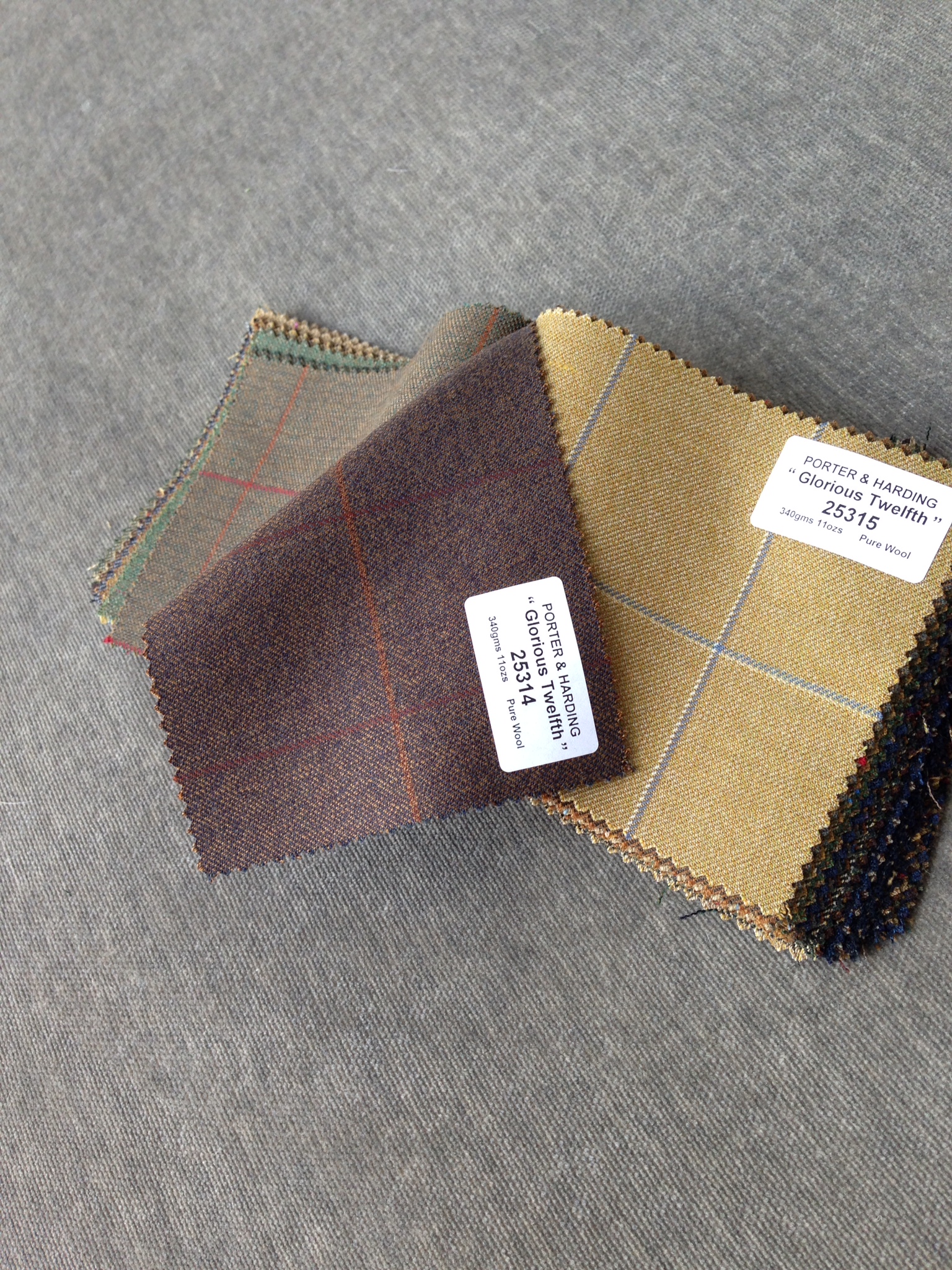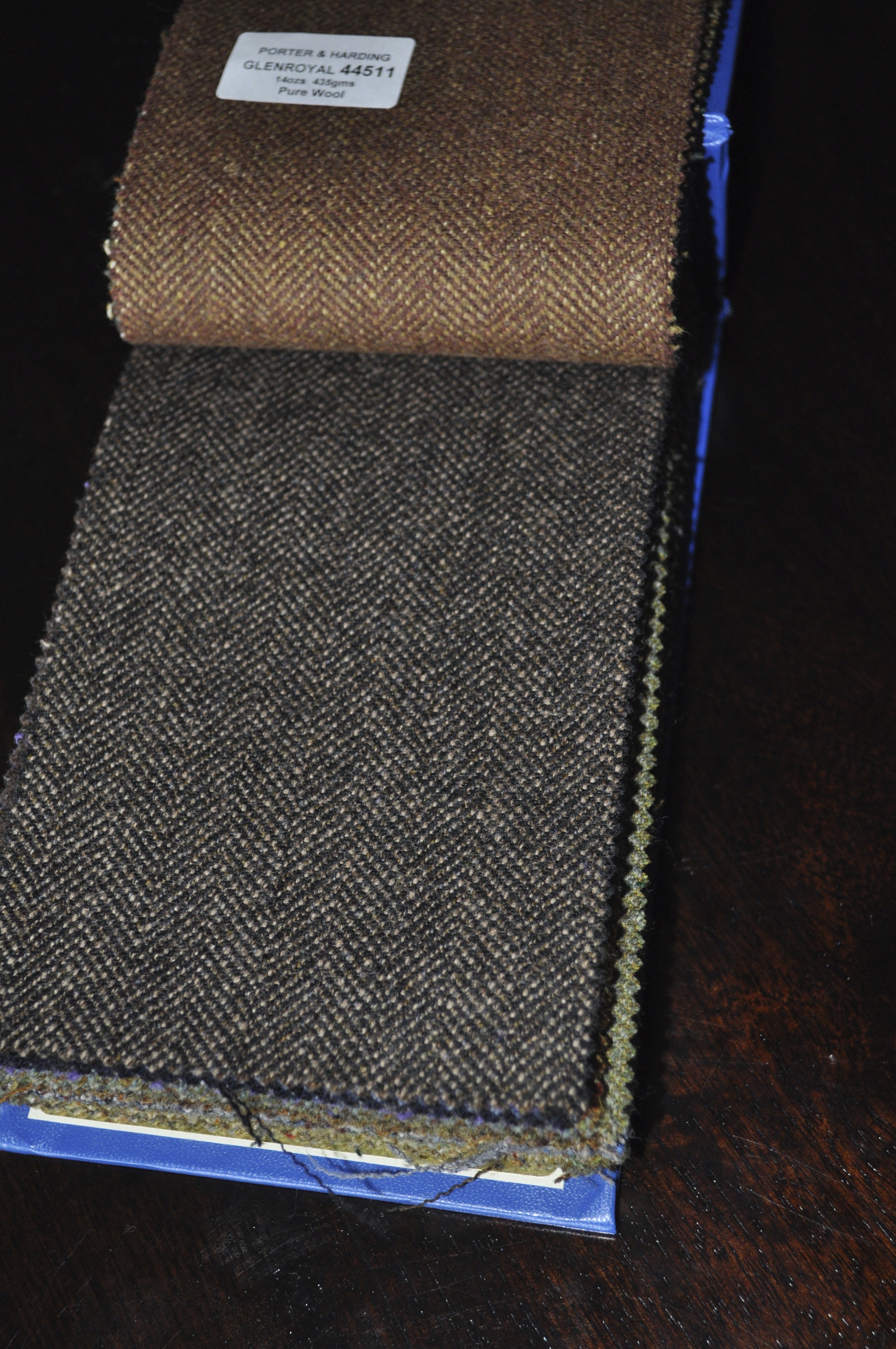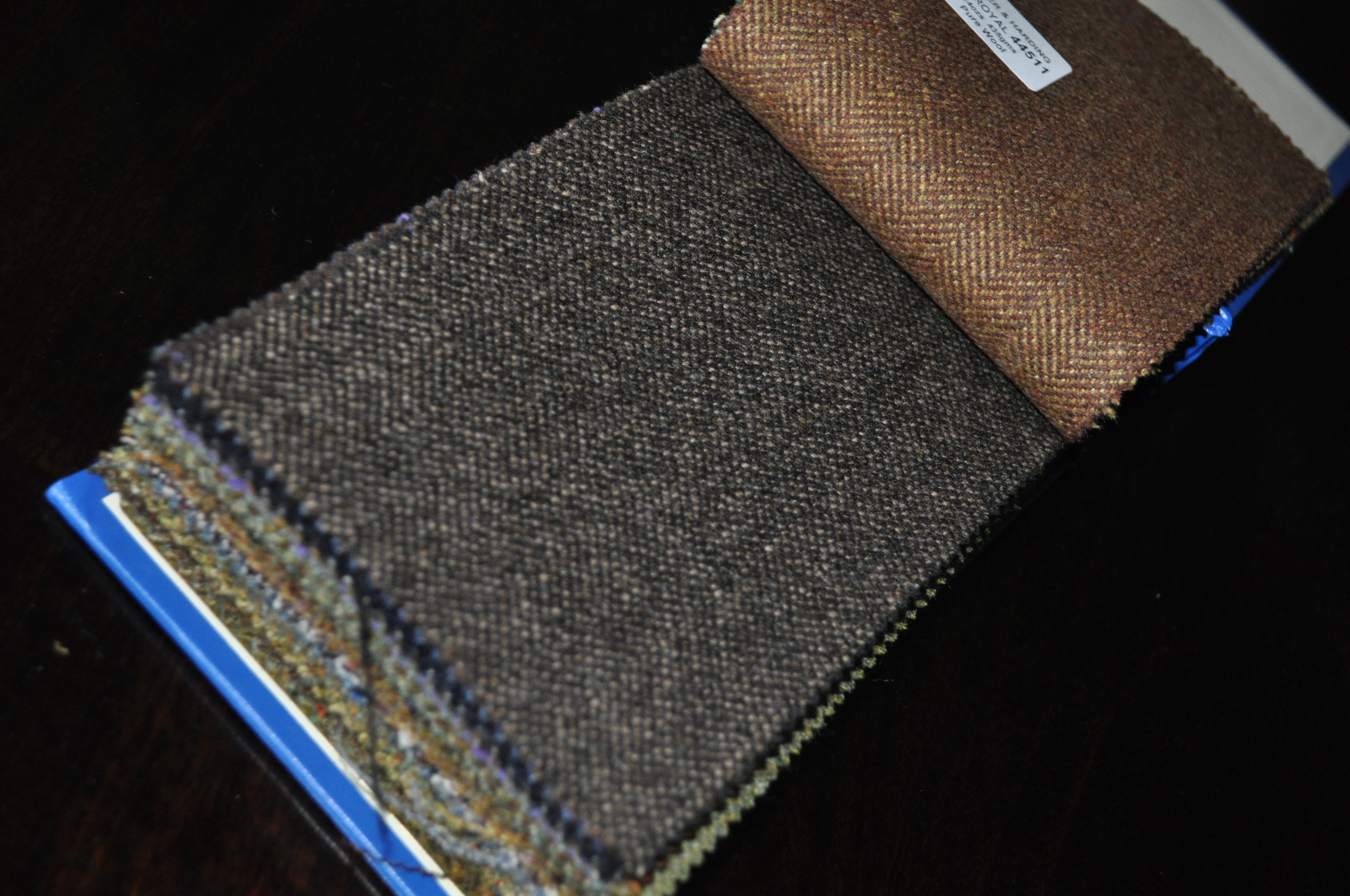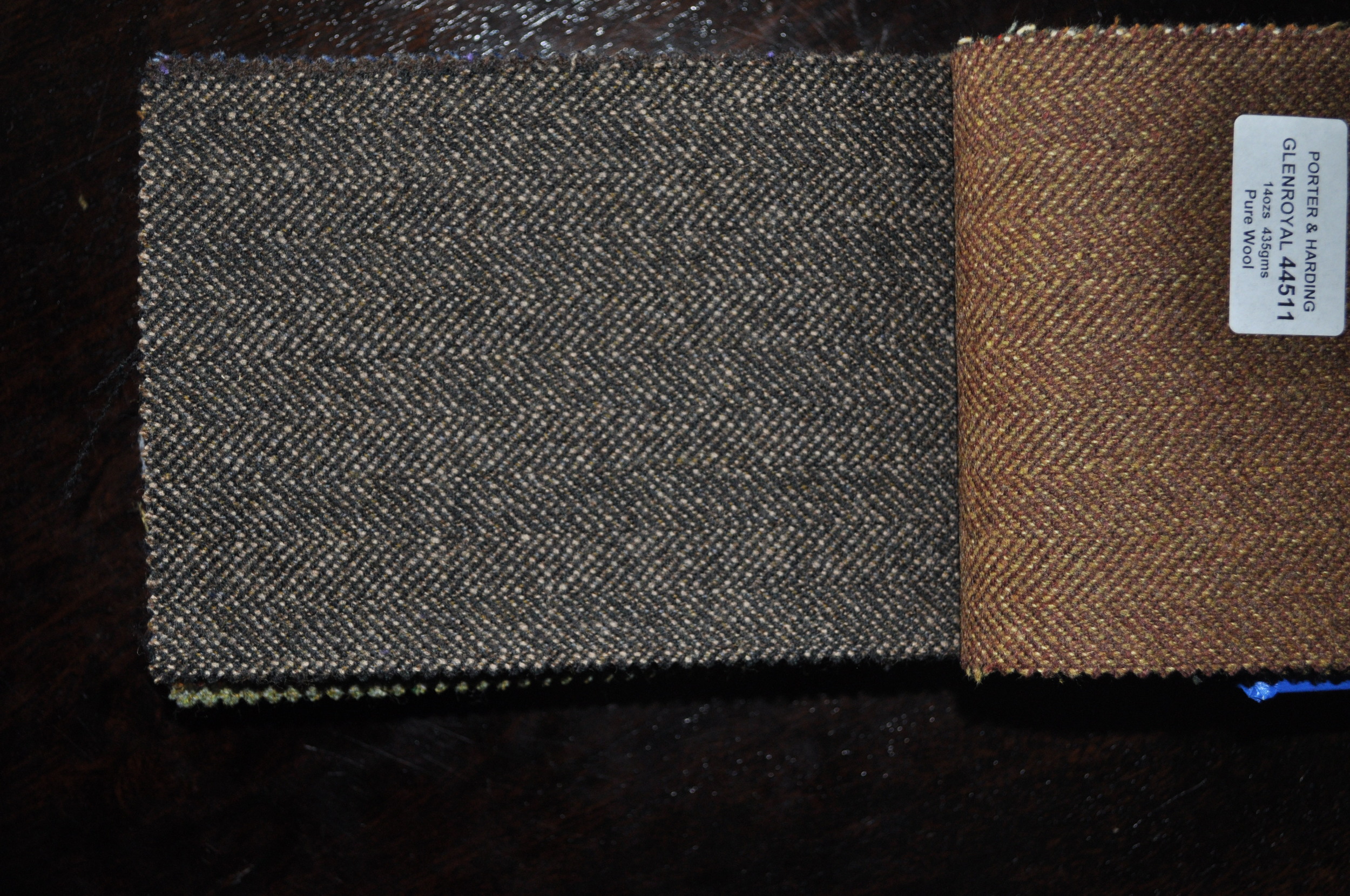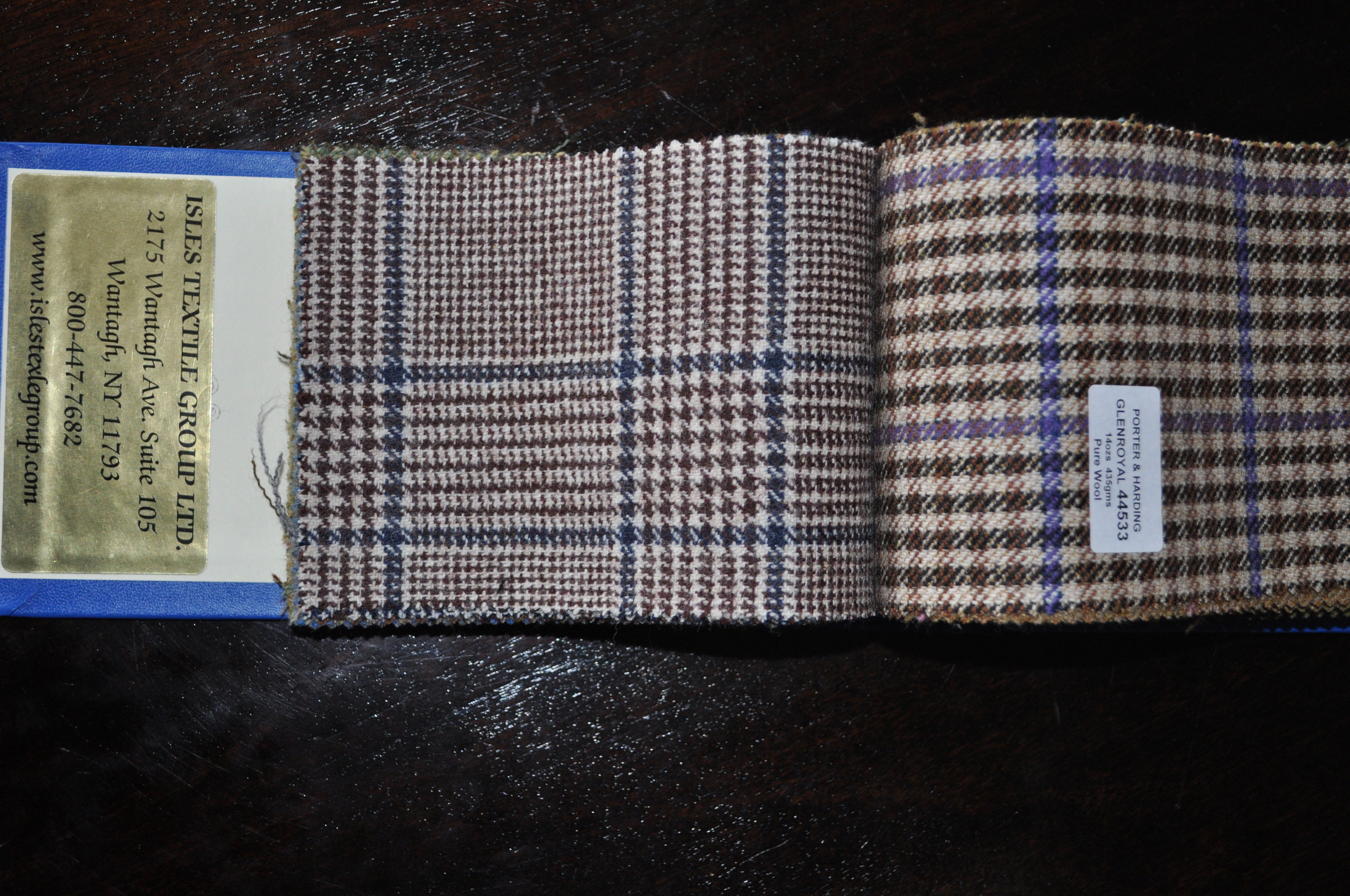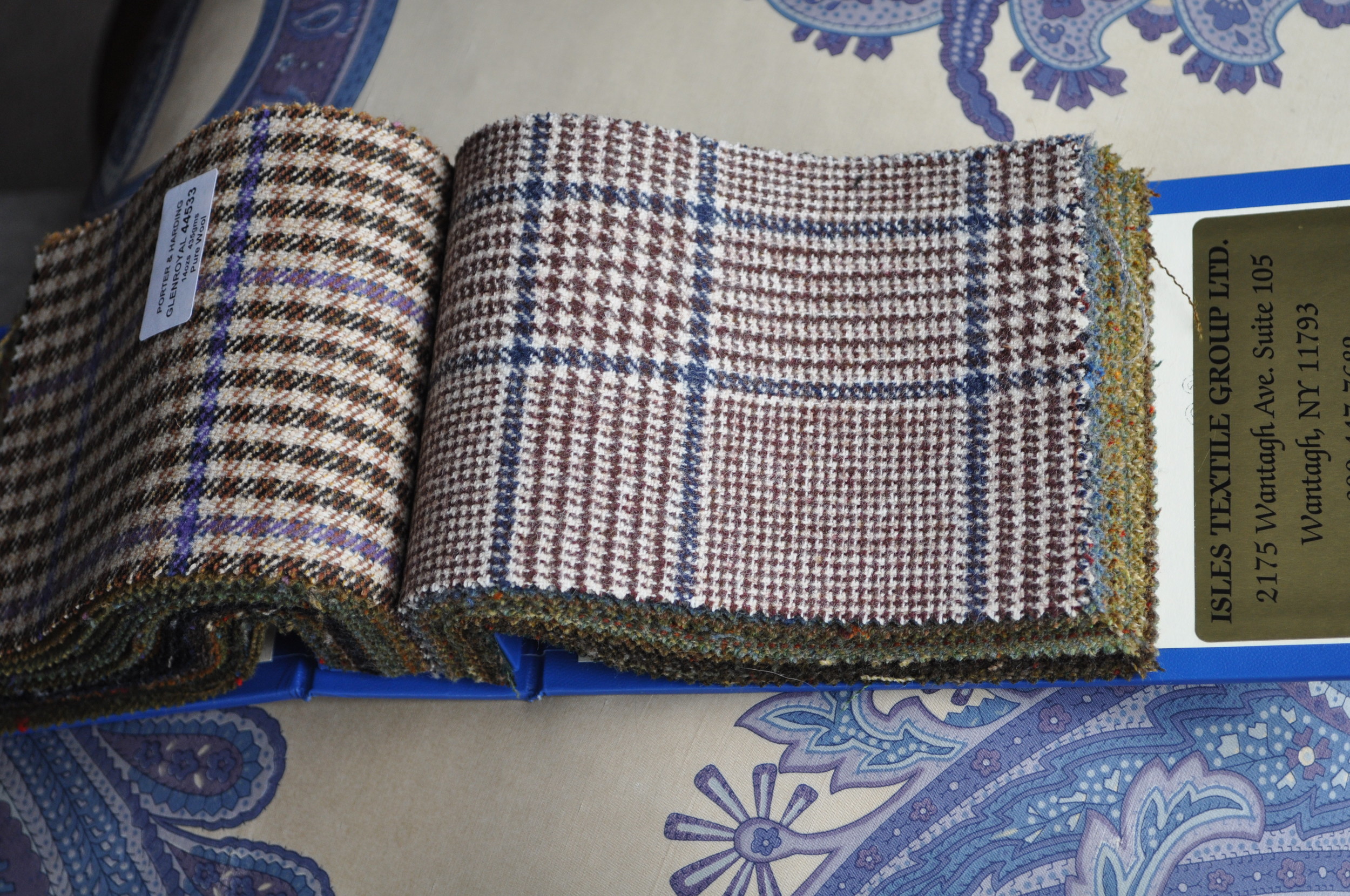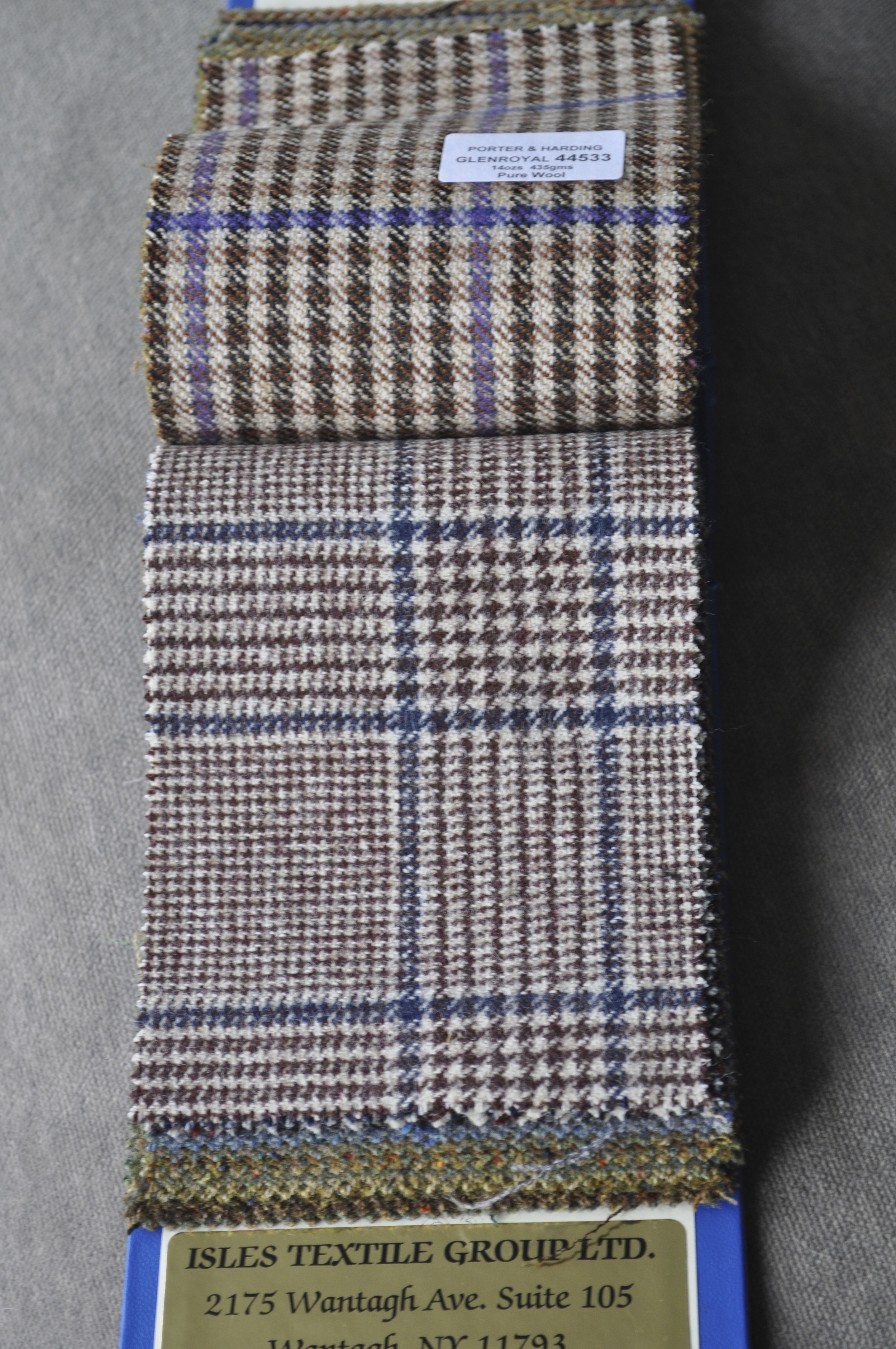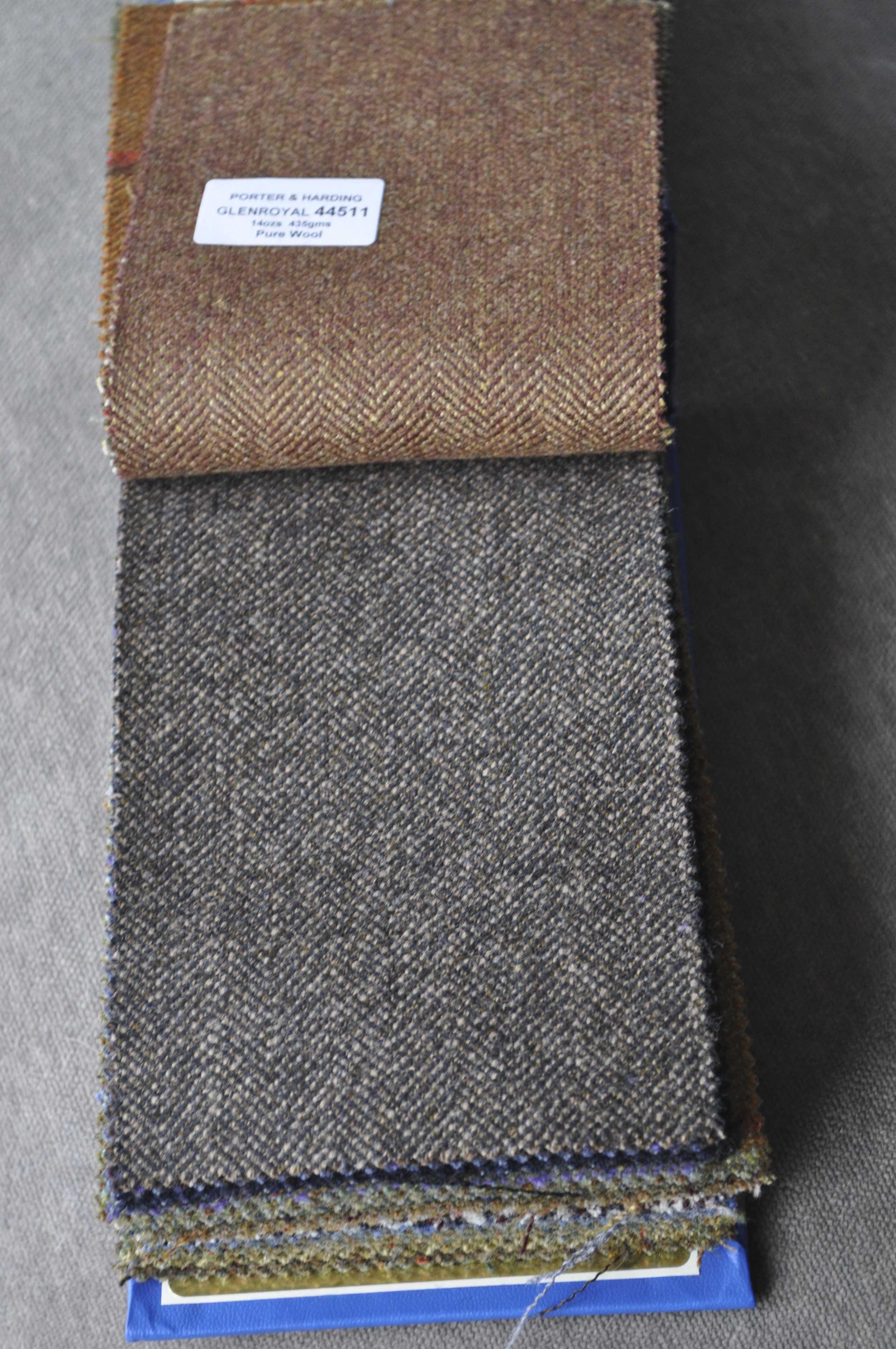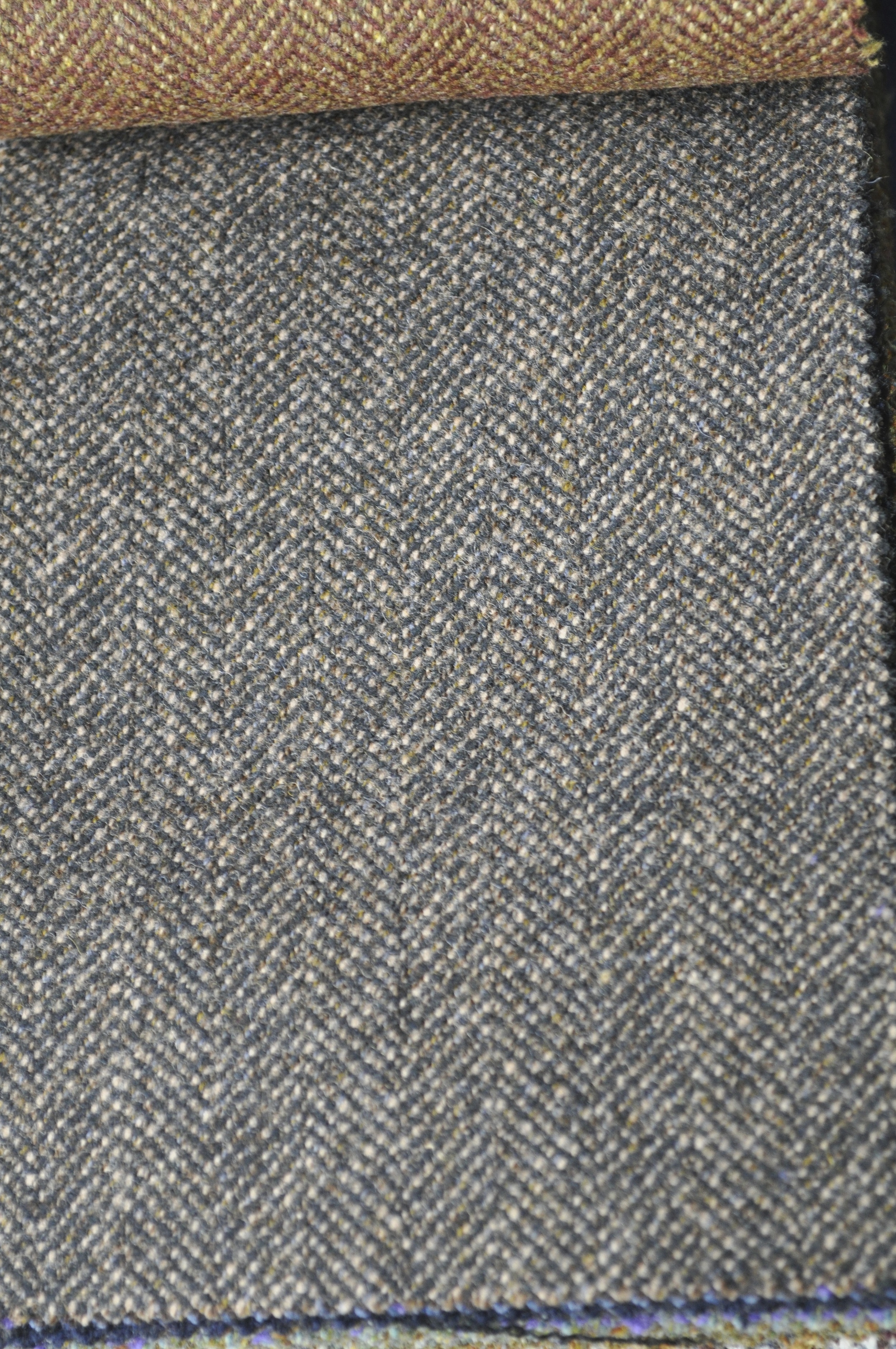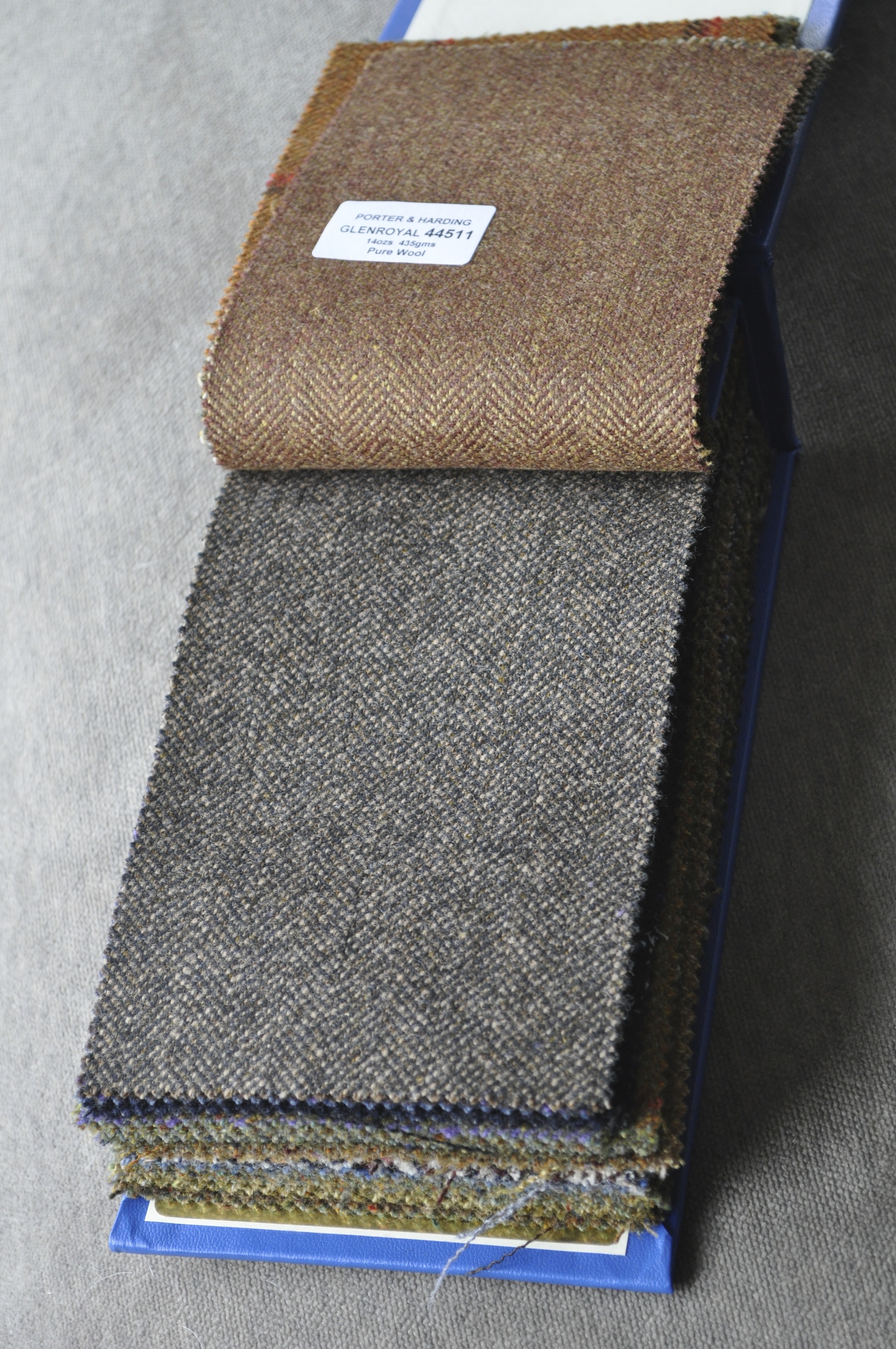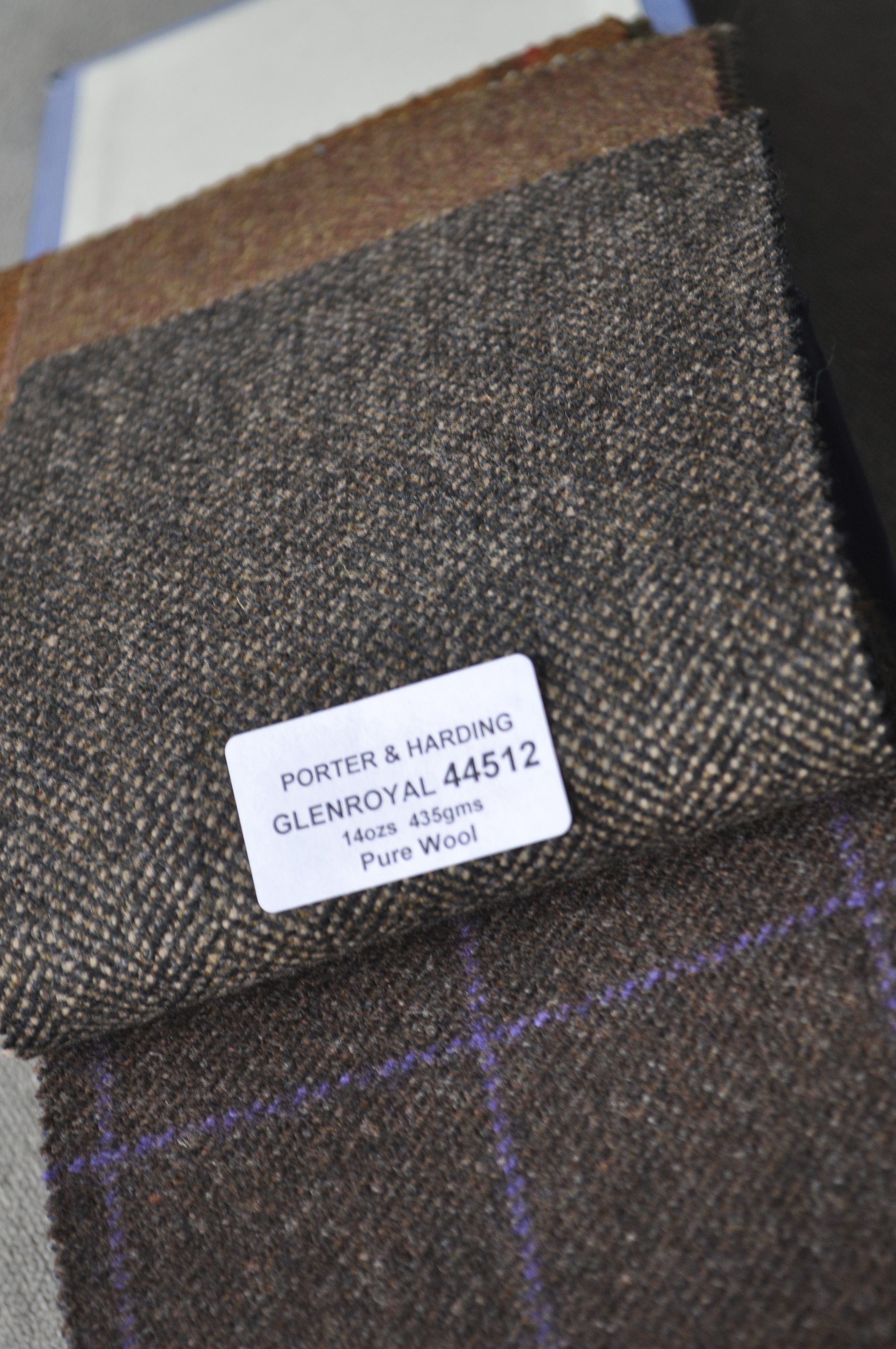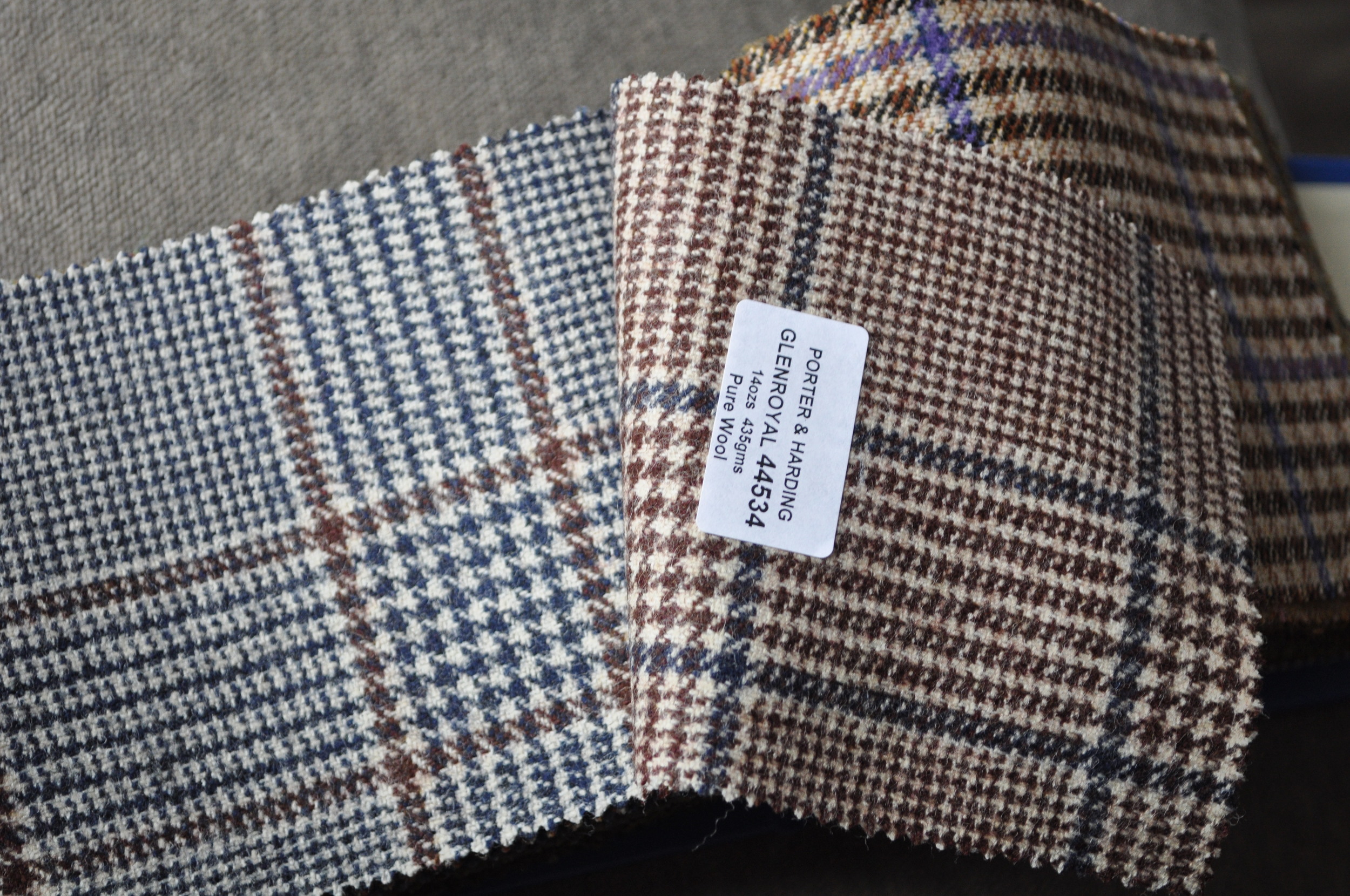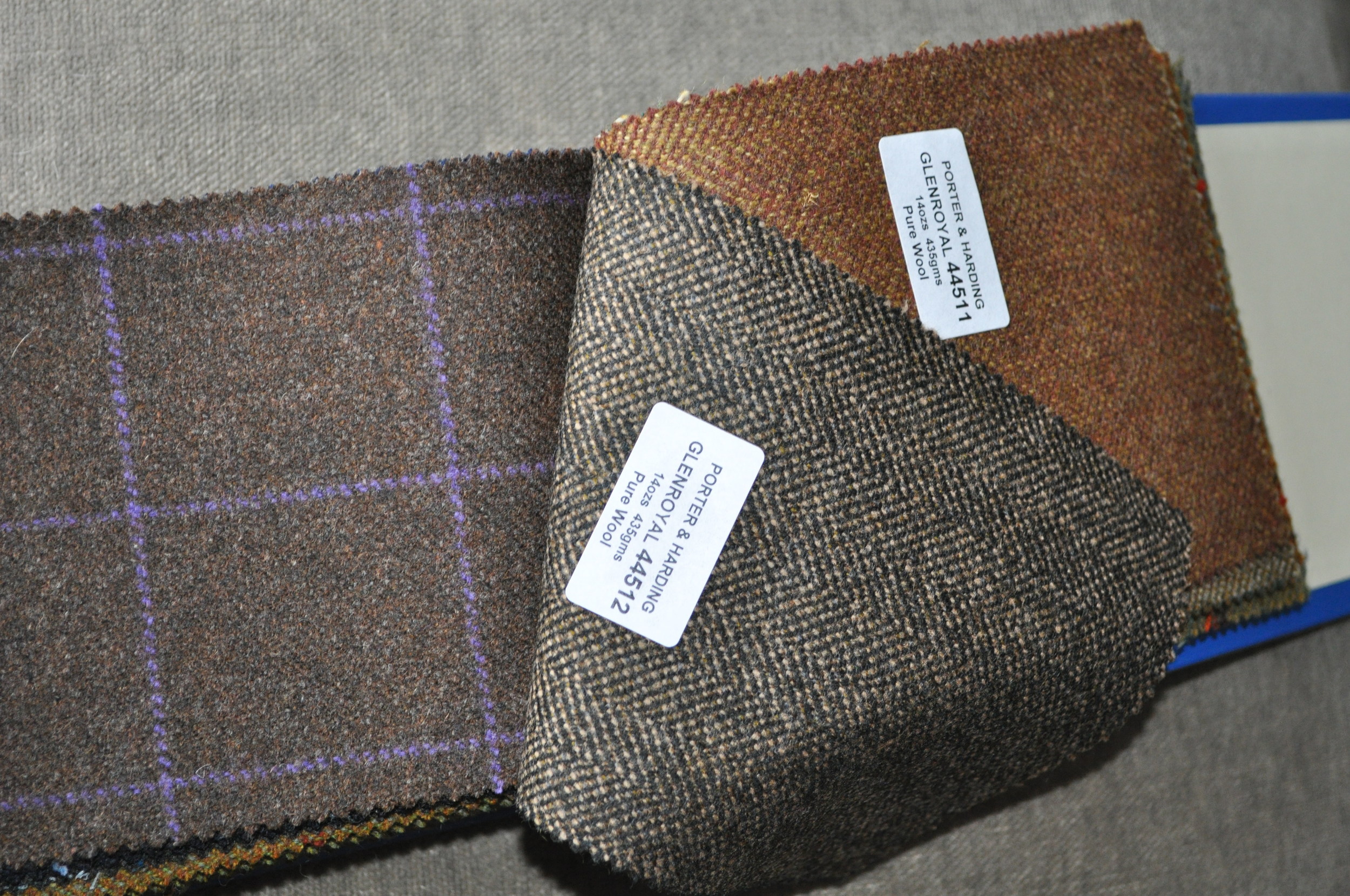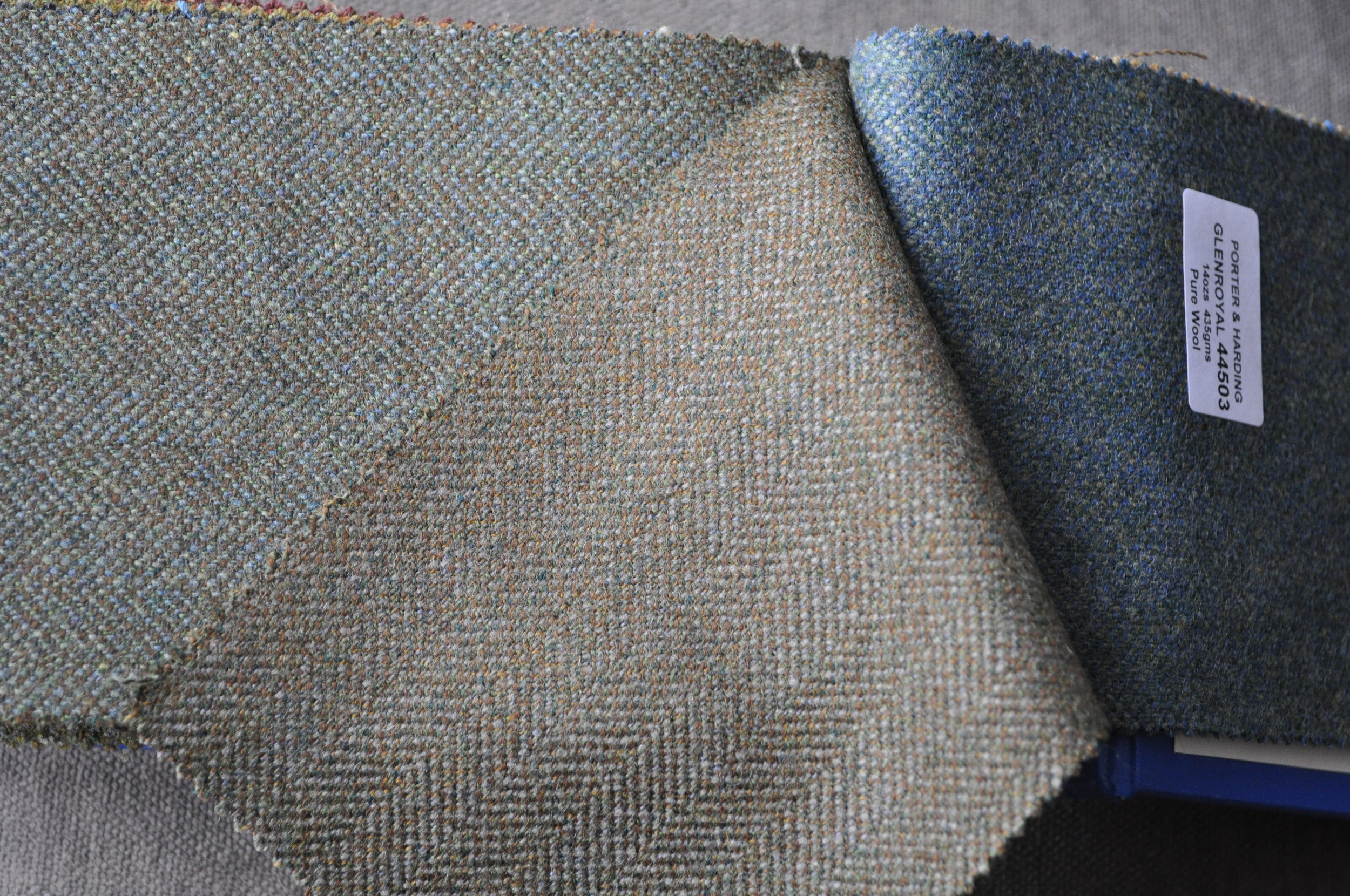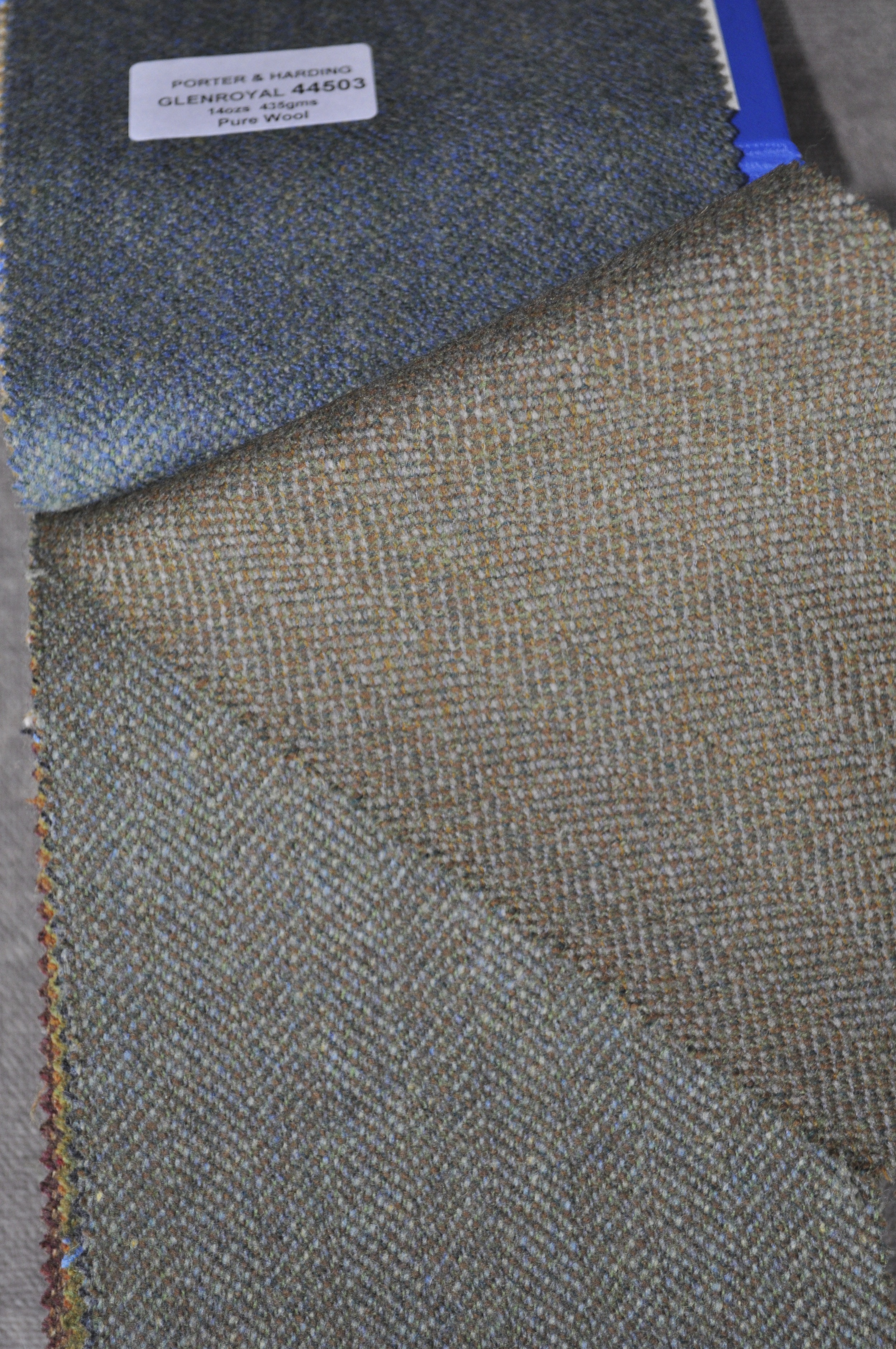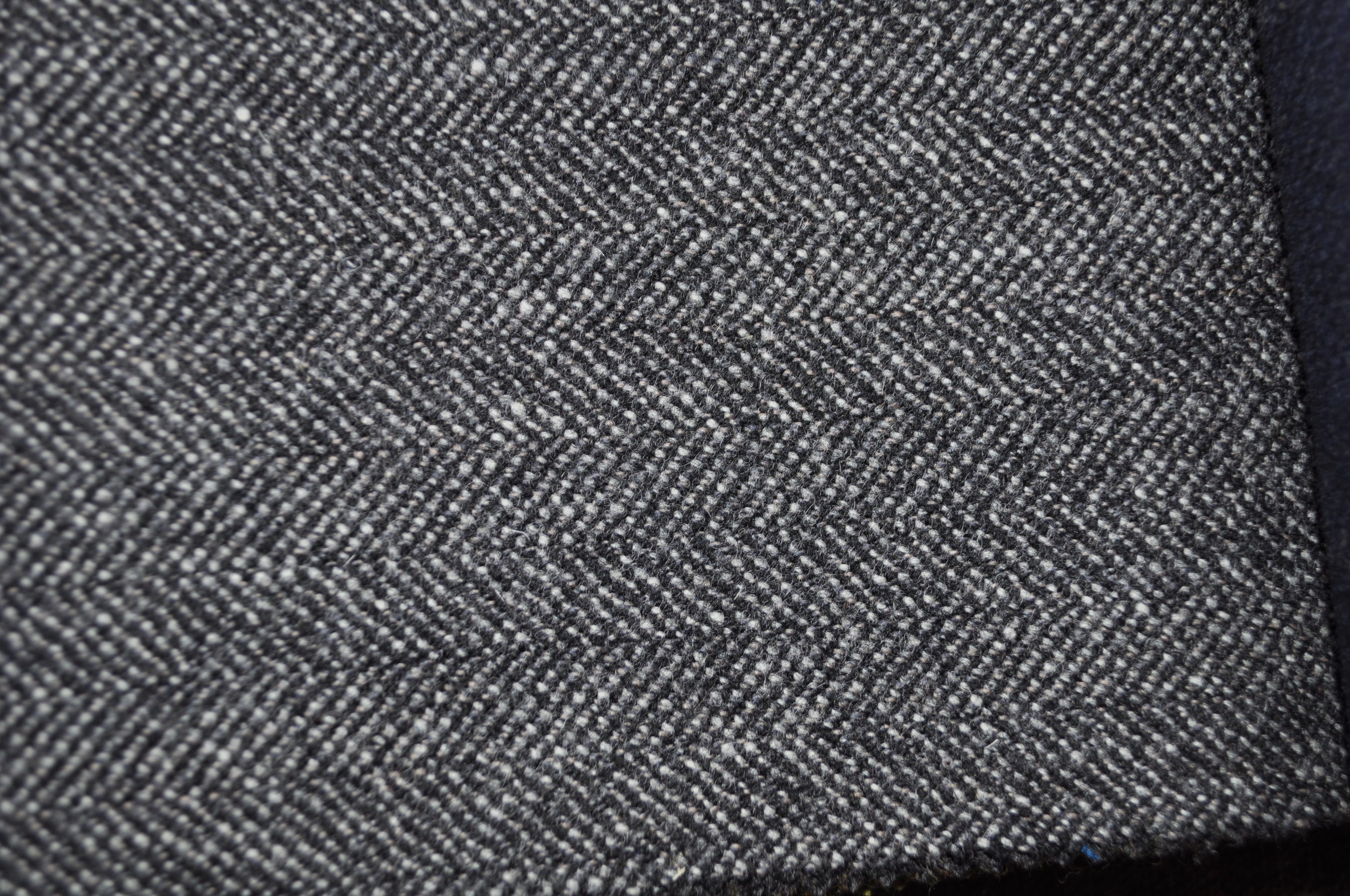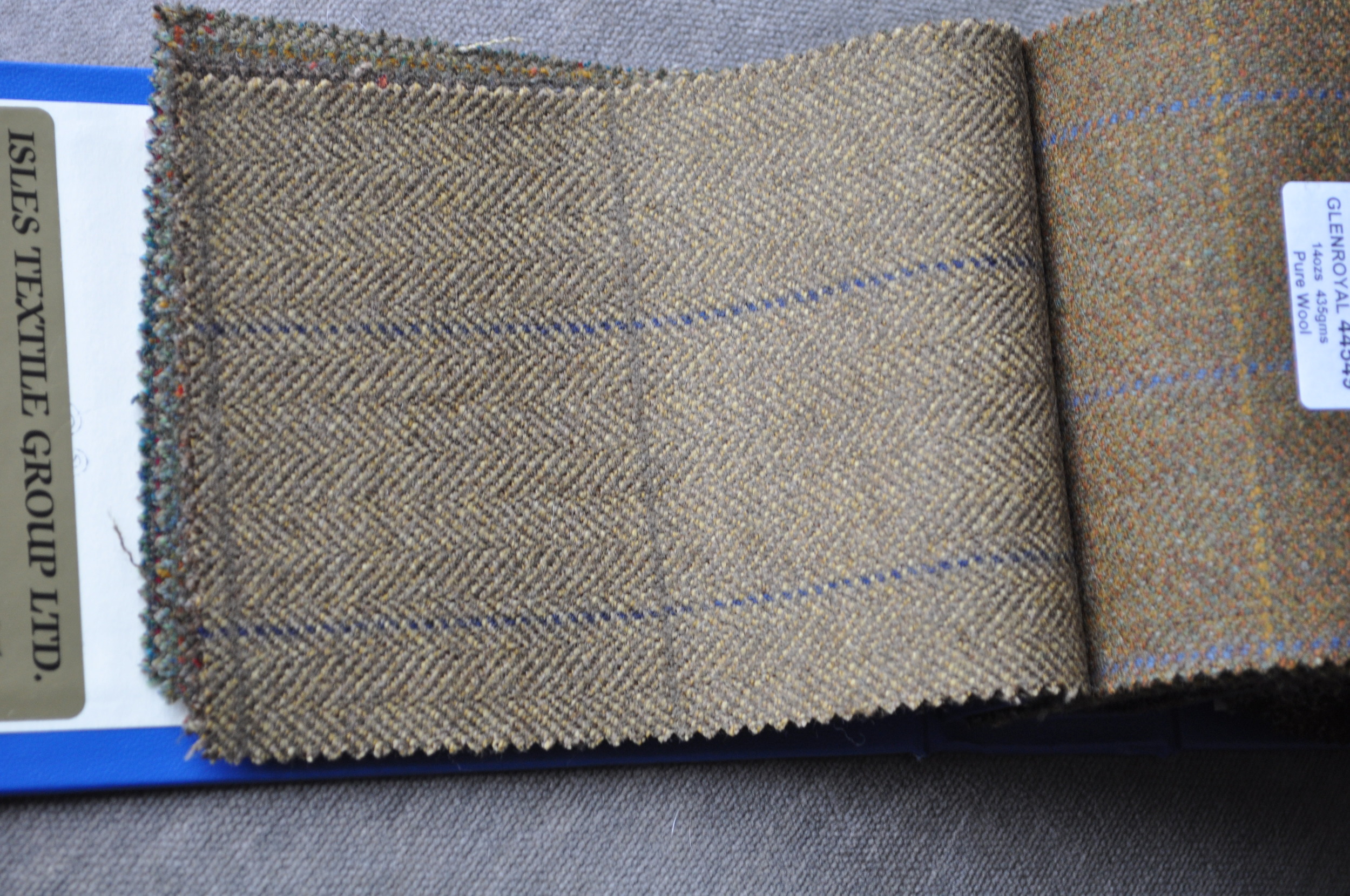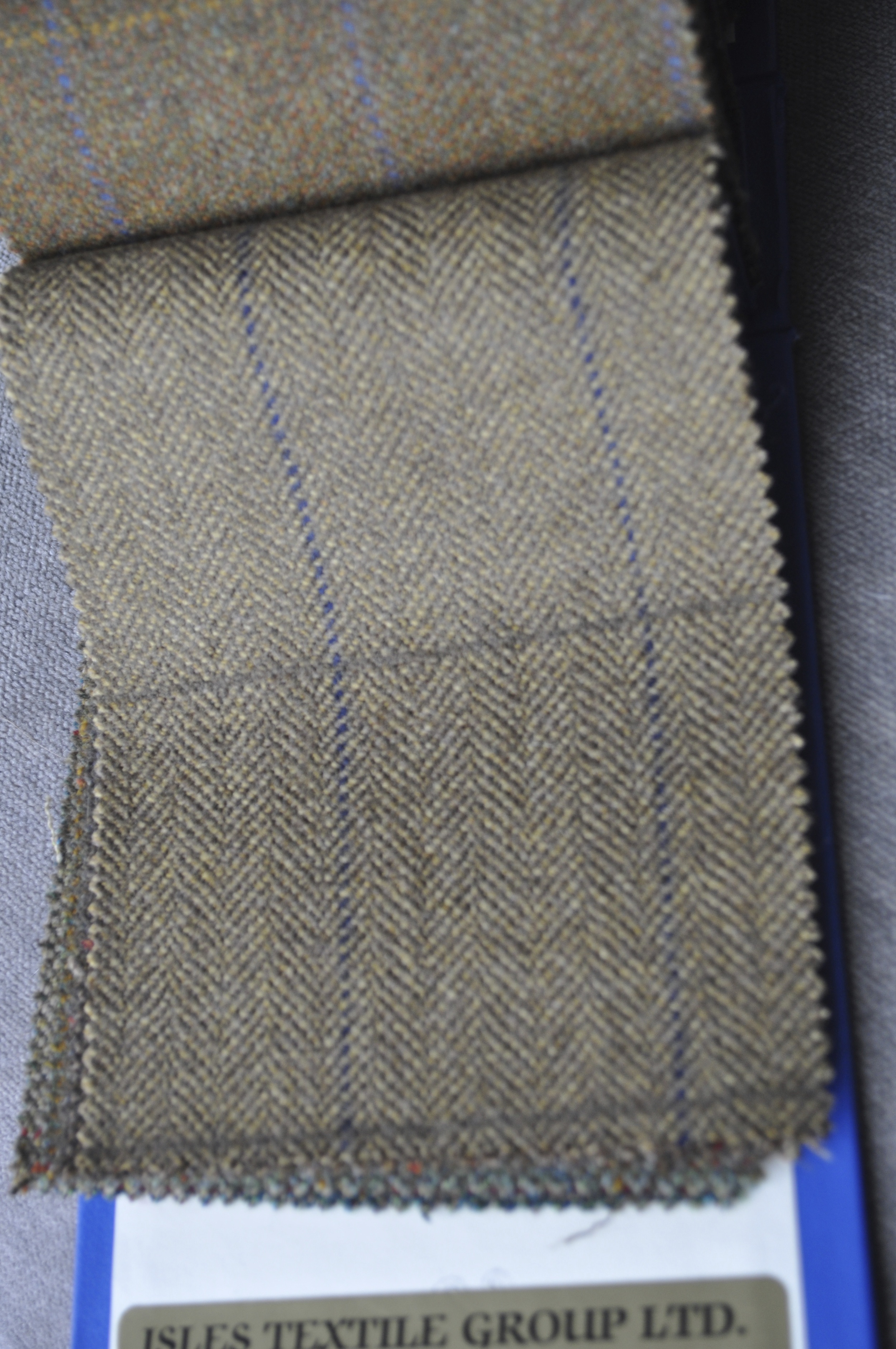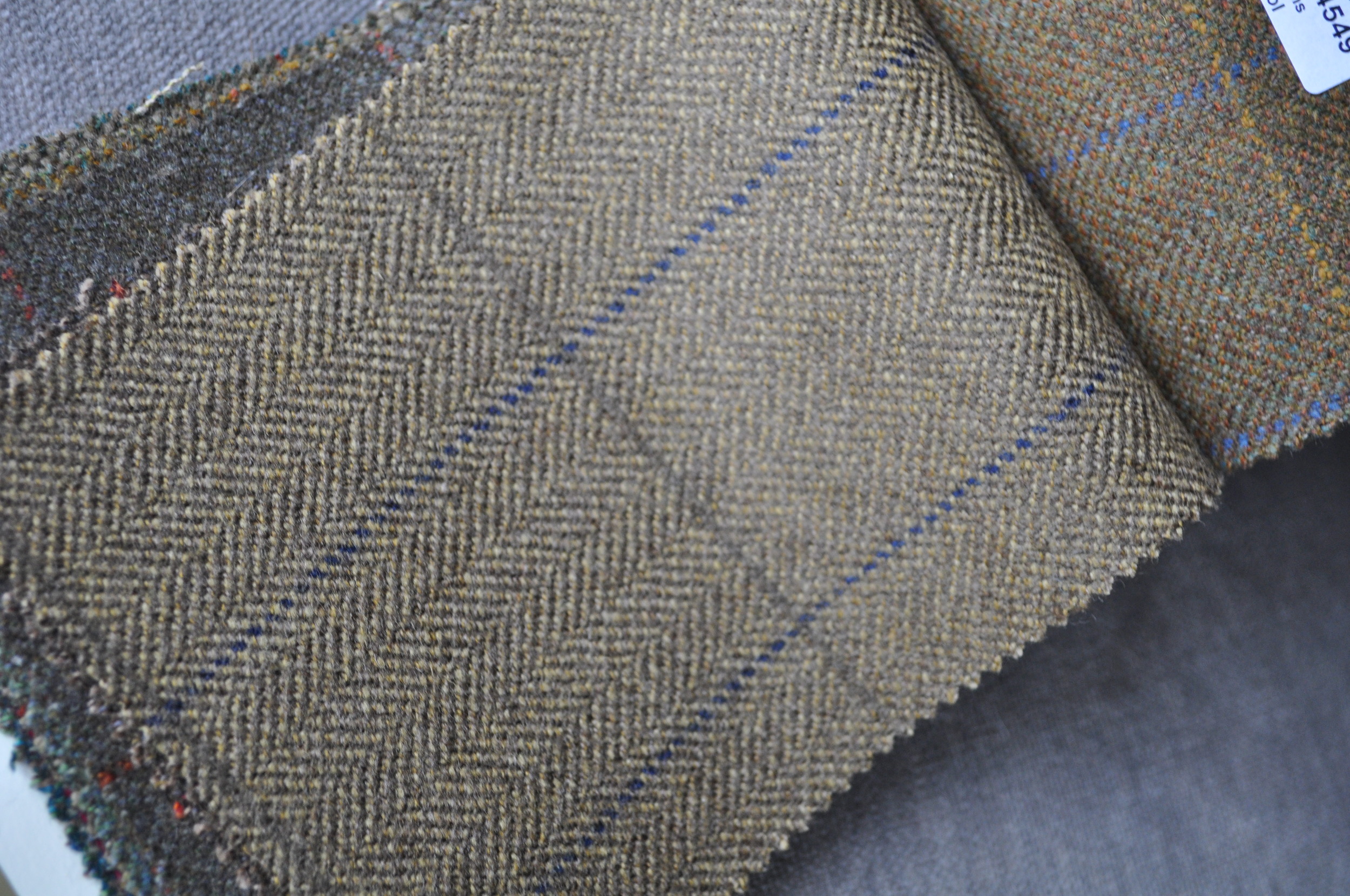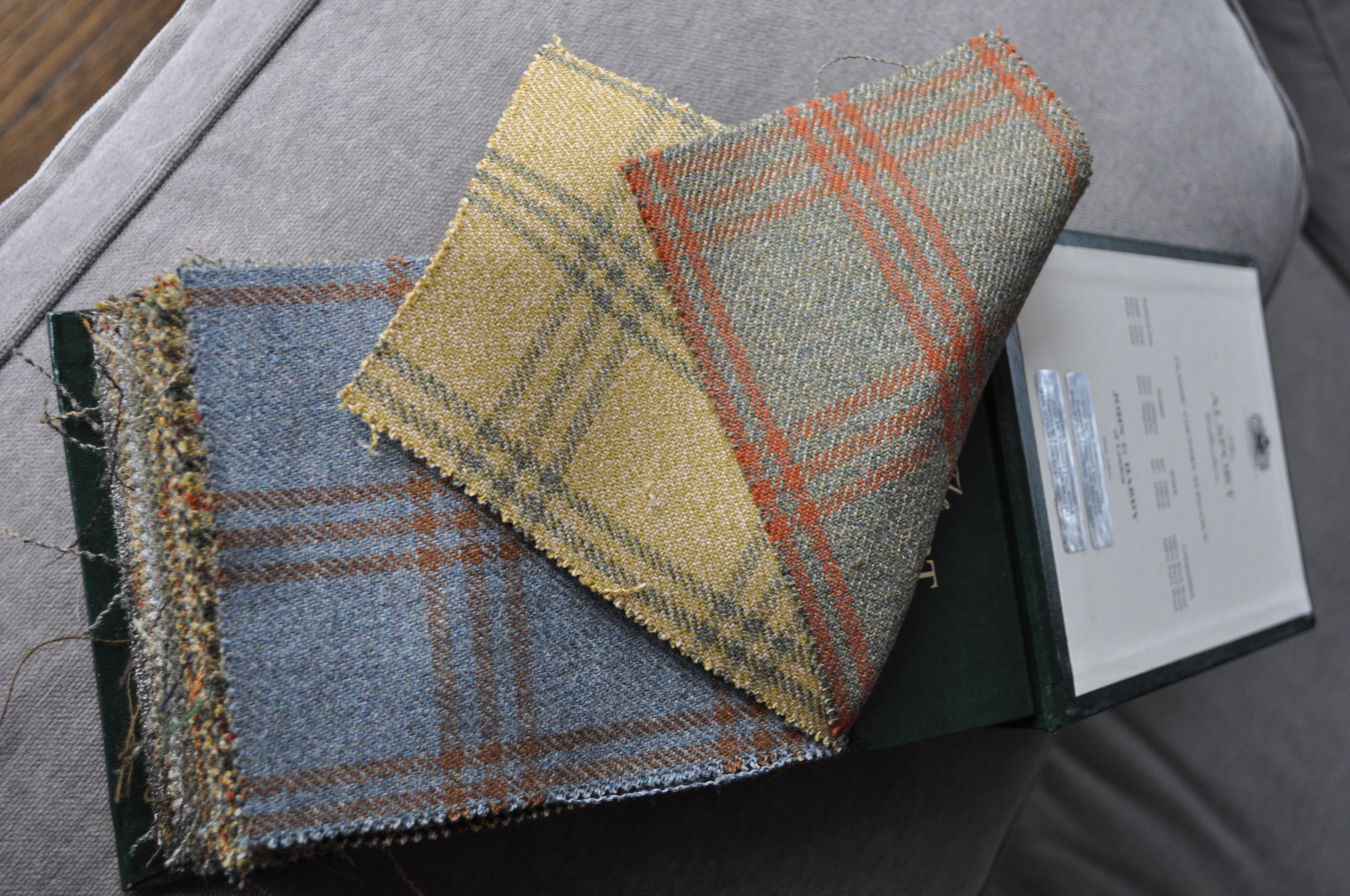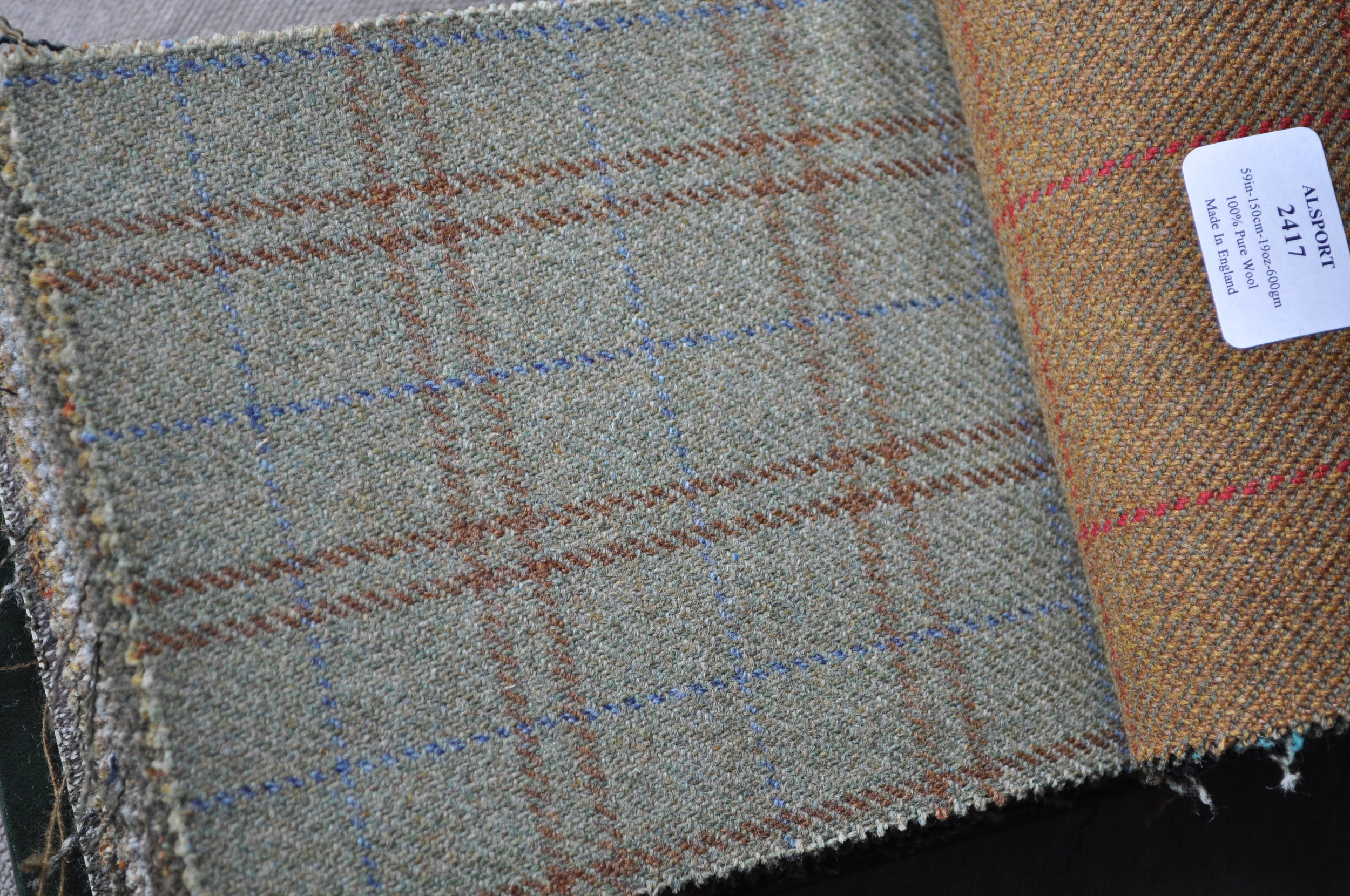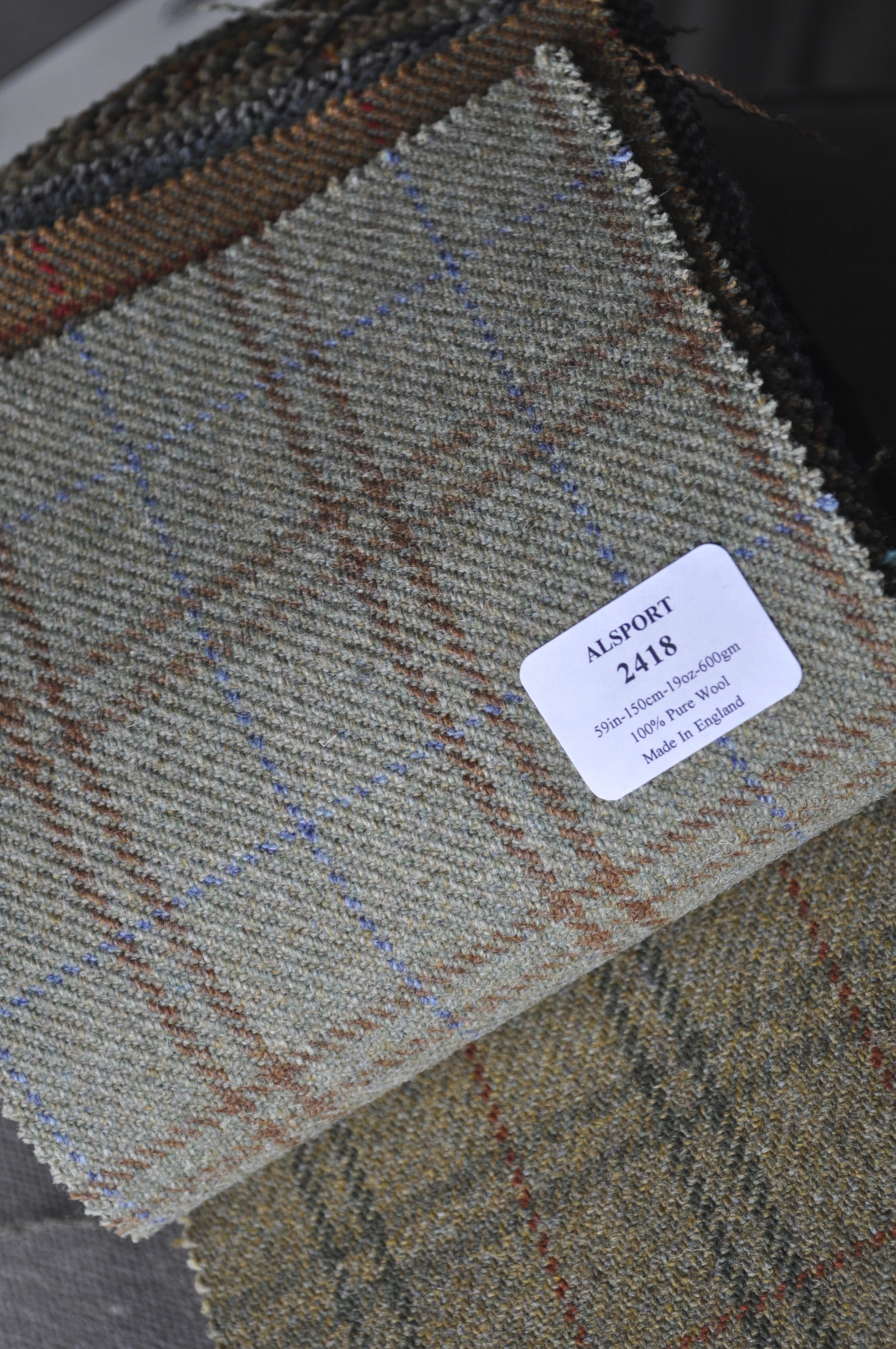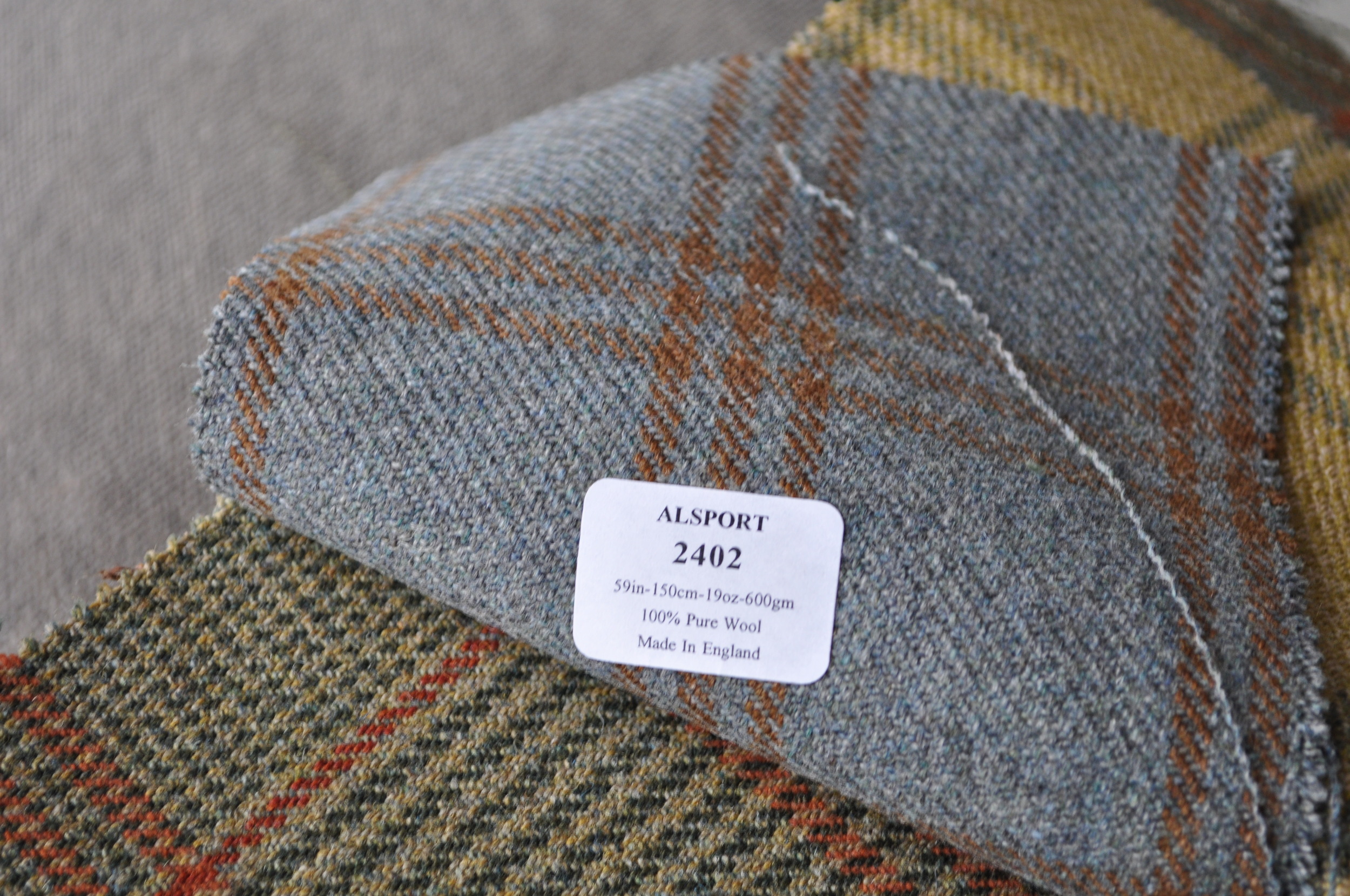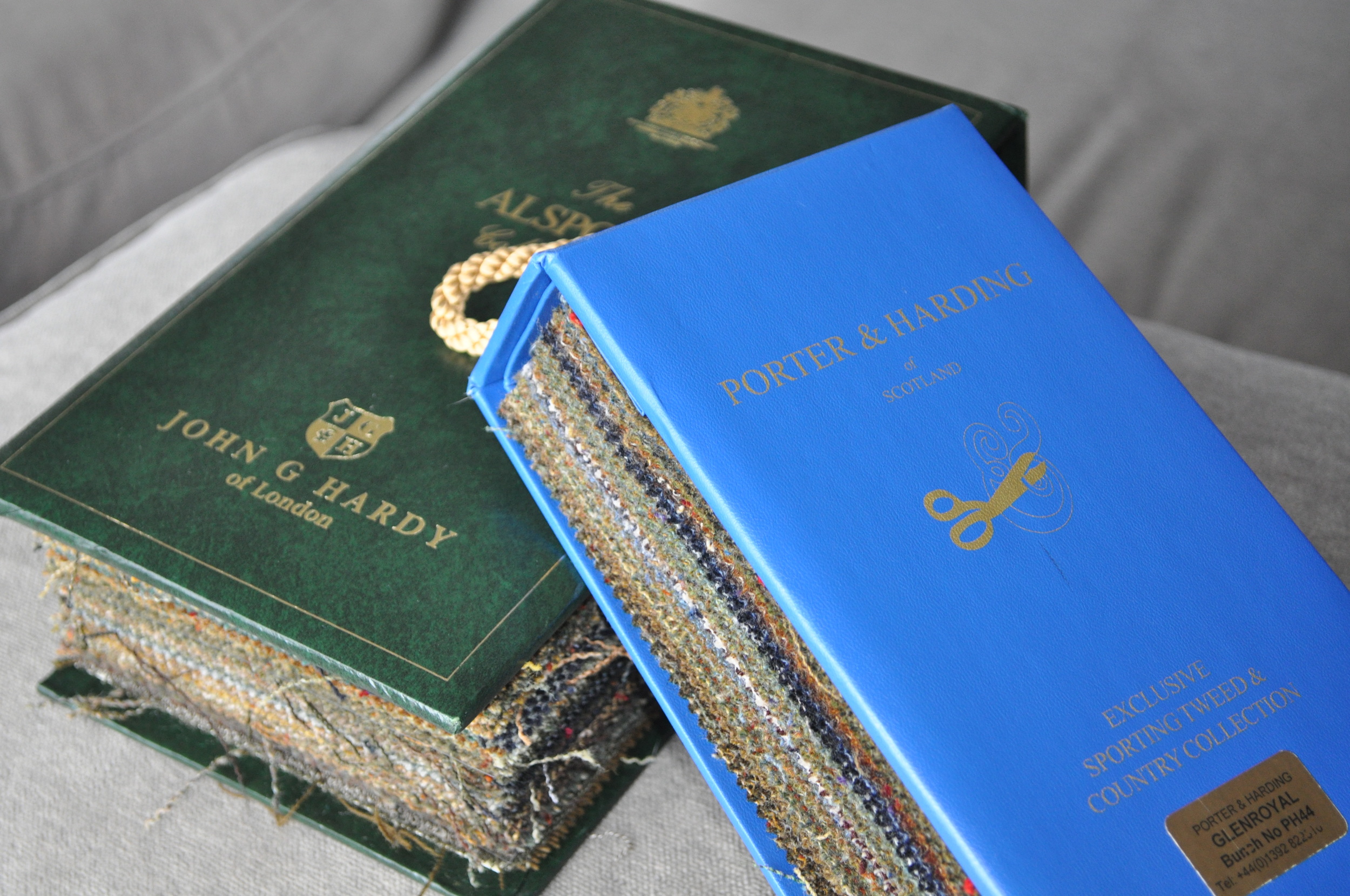Light of Heart
Porter & Harding's "Glorious Twelfth" is a book of 11 ounce worsted cloth made to suggest tweed. I say suggest because non-woolen cloth at that weight will only ever be an imitation of the real ambling-through-the-gorse stuff. The patterns and colors, however, are largely those of the country. For some purists this is an uncomfortable compromise; Glorious Twelfth is neither fish-nor-fowl--and would certainly be helpless if confronted by either.
The other way to view this collection: as ordinary worsted suiting with an array of unusual patterns and colors. The trick here is to discern and ignore those with obvious country-lineage (the checks-on-light-grounds, for instance) focusing instead on the muted twills with tonal overchecks. These would work for those occasions where navy and charcoal are too stiff, but a suit still feels right (school and informal religious functions come to mind).
If hearts are set on sport coats, the handful of busy little gun clubs seem to be a best bet. I would think styling important here; skip-buttoning sleeves and patch pockets might emphasize the sporty nature of the cloth, but throat latches and belted backs might betray its light-weight, worsted heart.




